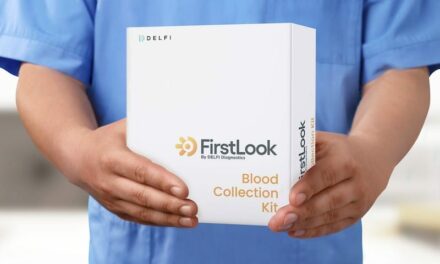According to a recent study, RNA testing conducted at the same time as DNA testing identifies more genetic mutations that increase hereditary cancer risk than DNA testing alone.1
Taking advantage of this study finding, Ambry Genetics, Aliso Viejo, Calif, is offering its +RNAinsight test to perform concurrent RNA and DNA testing for hereditary cancer risk as a commercially available clinical test.
Inherited mutations—variants or errors in DNA that increase cancer risk—play a major role in about 5% to 10% of all cancers. Genetic testing identifies such inherited mutations and is a critical tool for preventing hereditary cancers or treating them early.
However, standard DNA testing for hereditary cancer risk excludes portions of DNA, thereby missing some mutations. In addition, DNA testing can produce inconclusive results and fail to determine whether a variant increases cancer risk. Such limitations affect patients and their families because doctors may not have the information needed to recommend appropriate preventive, early-detection, or therapeutic steps. Additionally, relatives may not be referred for genetic testing or obtain the care they would otherwise have gotten if they had learned they had mutations.
Performing RNA testing at the same time as DNA testing helps address these limitations. Specifically, RNA genetic testing provides an additional line of evidence that helps determine whether an uncertain result from DNA-only testing is actually benign (normal) or pathogenic (disease-causing). It also helps identify mutations that DNA-only testing misses.
For the study, researchers from Ambry collaborated with others from 19 leading clinical institutions—including Huntsman Cancer Institute, Massachusetts General Cancer Center, and the University of Pennsylvania—to look at 18 tumor-suppressor genes where loss of function is known to be associated with increased cancer. The researchers conducted a prospective study of samples from the first 1,000 patients sent in for hereditary cancer testing, using RNA testing coupled with DNA testing.
The study found that RNA testing identified seven patients with pathogenic mutations that would otherwise have received negative or inconclusive results from DNA testing alone. For six of the seven cases, substantial changes to medical management could be or were recommended based on current guidelines.
“The study findings demonstrate both the feasibility and clinical utility of adding concurrent RNA genetic testing to determine hereditary cancer risk,” says Tyler Landrith, PhD, an Ambry scientist and study coauthor. “Using +RNAinsight provides healthcare providers with more accurate results to inform patient care.”
Notably, the prospective analysis showed a 9.1% relative increase in diagnostic yield over DNA testing alone. Adding RNA genetic testing also resulted in a 5.1% relative decrease in the number of patients that would have received inconclusive results with DNA testing alone and would not have learned whether they had increased cancer risk.
The study also validated the accuracy of +RNAinsight, establishing a large control dataset of healthy patients. The dataset enabled study coauthors from Ambry to establish a baseline for benign and disease-causing variants across the genes tested.
For more information, visit Ambry Genetics.
Reference
1. Landrith T, Li B, Cass AA, et al. Splicing profile by capture RNA-seq identifies pathogenic germline variants in tumor suppressor genes. NPJ Precis Oncol. 2020;4:4; doi: 10.1038/s41698-020-0109-y.





